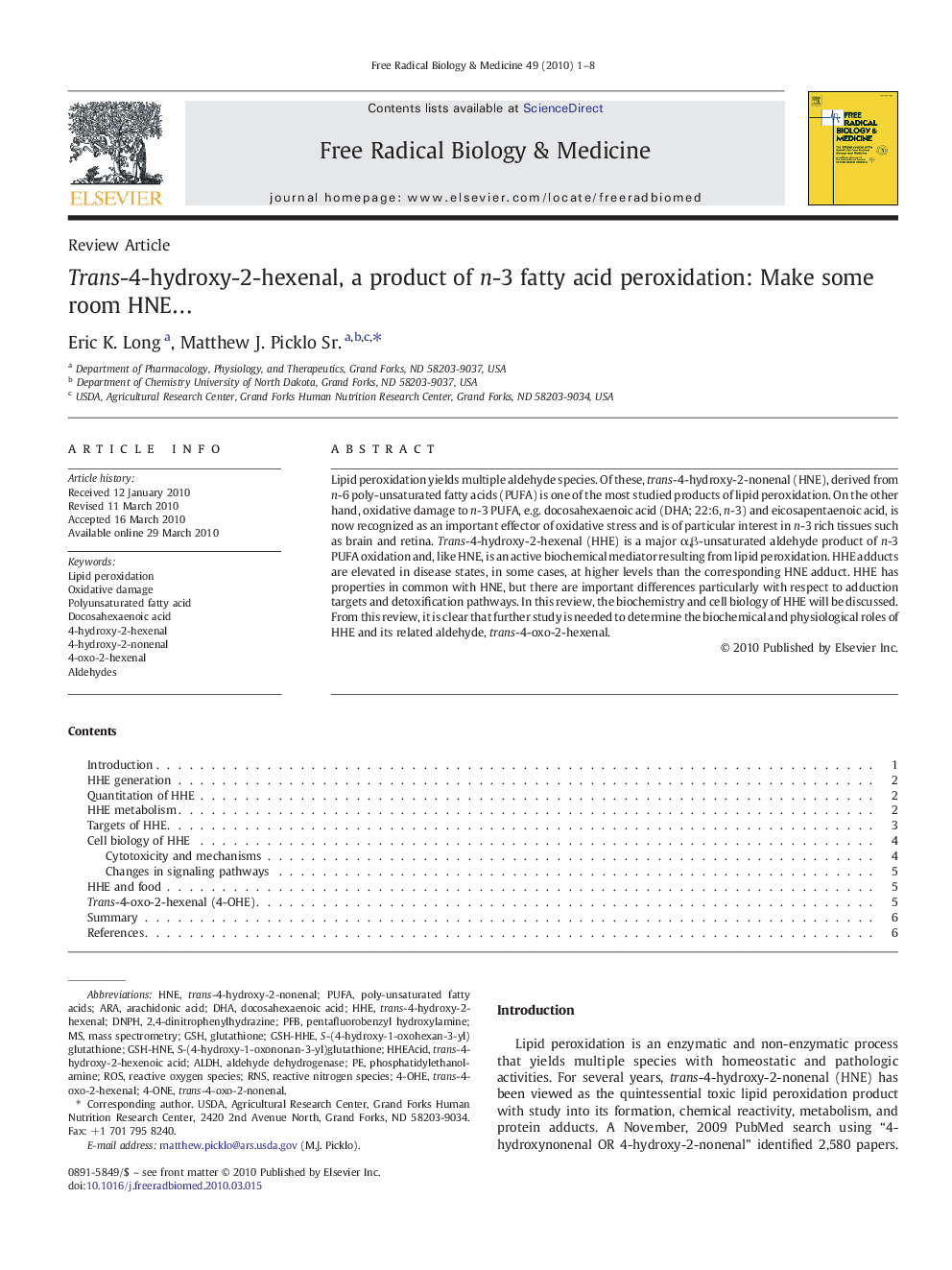| Article ID | Journal | Published Year | Pages | File Type |
|---|---|---|---|---|
| 1909411 | Free Radical Biology and Medicine | 2010 | 8 Pages |
Lipid peroxidation yields multiple aldehyde species. Of these, trans-4-hydroxy-2-nonenal (HNE), derived from n-6 poly-unsaturated fatty acids (PUFA) is one of the most studied products of lipid peroxidation. On the other hand, oxidative damage to n-3 PUFA, e.g. docosahexaenoic acid (DHA; 22:6, n-3) and eicosapentaenoic acid, is now recognized as an important effector of oxidative stress and is of particular interest in n-3 rich tissues such as brain and retina. Trans-4-hydroxy-2-hexenal (HHE) is a major α,β-unsaturated aldehyde product of n-3 PUFA oxidation and, like HNE, is an active biochemical mediator resulting from lipid peroxidation. HHE adducts are elevated in disease states, in some cases, at higher levels than the corresponding HNE adduct. HHE has properties in common with HNE, but there are important differences particularly with respect to adduction targets and detoxification pathways. In this review, the biochemistry and cell biology of HHE will be discussed. From this review, it is clear that further study is needed to determine the biochemical and physiological roles of HHE and its related aldehyde, trans-4-oxo-2-hexenal.
